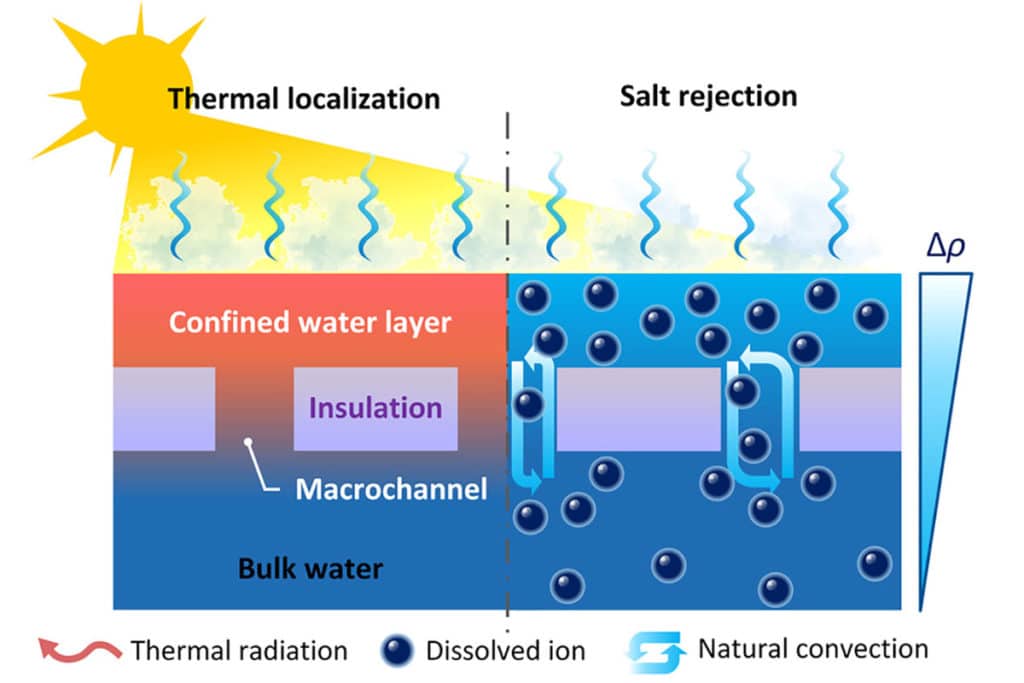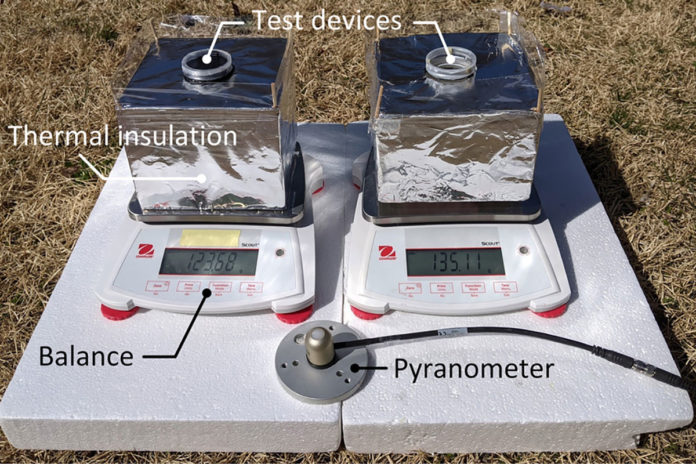A team of researchers at MIT and in China has developed a new solar-powered desalination system that is both more efficient and less expensive than previous solar desalination methods. The process could be used to treat contaminated wastewater or to generate steam for sterilizing medical instruments, all without requiring any power source other than sunlight itself.
Many attempts at solar desalination systems rely on some kind of wick to draw the saline water through the device, but these wicks are vulnerable to salt accumulation and relatively difficult to clean. The MIT team focused on developing a wick-free system instead.
The system is comprised of several layers with dark material at the top to absorb the sun’s heat, then a thin layer of water above a perforated layer of material, sitting atop a deep reservoir of salty water such as a tank or a pond. The researchers determined the optimal size for the holes drilled through the perforated material, which in their tests, was made of polyurethane. At 2.5 millimeters across, these holes can be easily made using commonly available waterjets.

With the help of dark material, the thin layer of water is heated until it evaporates, which can then be condensed onto a sloped surface for collection as pure water. The holes in the perforated material are large enough to allow for a natural convective circulation between the warmer upper layer of water and the colder reservoir below. That circulation naturally draws the salt from the thin layer above down into the much larger body of water below, where it becomes well-diluted and no longer a problem.
During the experiments, the team says their new technique achieved over 80% efficiency in converting solar energy to water vapor and salt concentrations up to 20% by weight. Their test apparatus operated for a week with no signs of any salt accumulation.
So far, the team has proven the concept using small benchtop devices, so the next step will be starting to scale up to devices that could have practical applications. According to the researchers, their system with just 1 square meter (about a square yard) of collecting area should be sufficient to provide a family’s daily needs for drinking water. They calculated that the necessary materials for a 1-square-meter device would cost only about $4.
The team says the first applications are likely to be providing safe water in remote off-grid locations or for disaster relief after hurricanes, earthquakes, or other disruptions of normal water supplies. MIT graduate student Lenan Zhang adds that “if we can concentrate the sunlight a little bit, we could use this passive device to generate high-temperature steam to do medical sterilization” for off-grid rural areas.
